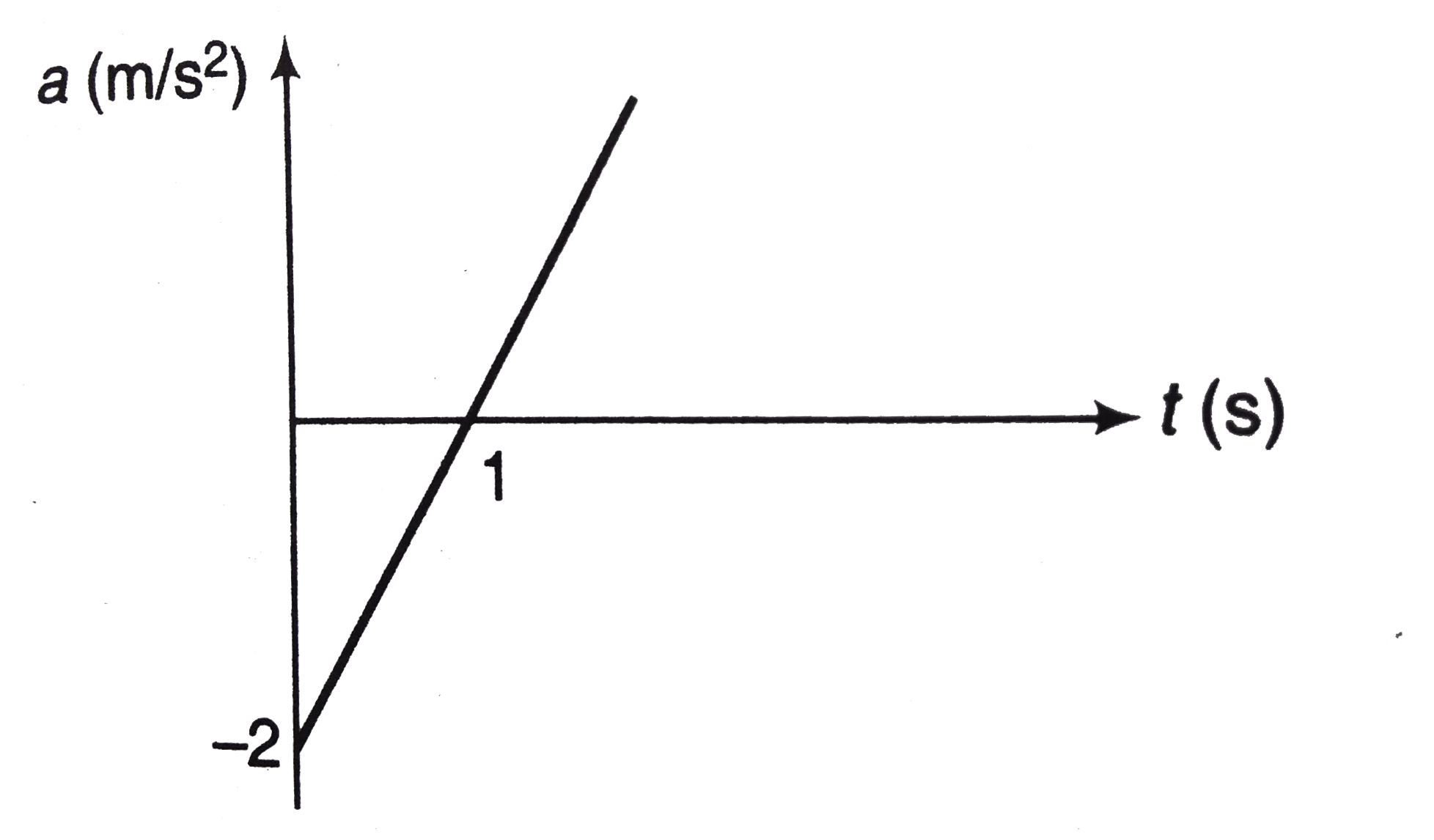In the previous problem, if the particle occupies a position x=7m at t=1s, then obtain an expression for the instantaneous displacement of the particle.
Again, we can use the idea that displacement is the integration of velocity w.r.t time.
So, x=∫vdt=∫(2t+5)dt=2t22+5t+c=t2+5t+c
where c is the constant of integration. Its value can be determined by using the given condition. (As particular details have been given about the particle.)
At t=1s, x=7m=7=12+5×1+c⇒c=1m
Hence, the expression becomes x=t2+5t+1
Topper's Solved these Questions
- BASIC MATHEMATICSBOOK - CENGAGE PHYSICSCHAPTER - BASIC MATHEMATICSEXERCISE - Solved Examples
9 Videos
- BASIC MATHEMATICSBOOK - CENGAGE PHYSICSCHAPTER - BASIC MATHEMATICSEXERCISE - Exercise 2.1
2 Videos
- ARCHIVES 2 VOLUME 6BOOK - CENGAGE PHYSICSCHAPTER - ARCHIVES 2 VOLUME 6EXERCISE - Integer
4 Videos
- CALORIMETRYBOOK - CENGAGE PHYSICSCHAPTER - CALORIMETRYEXERCISE - Solved Example
13 Videos
Similar Questions
Knowledge Check
In the previous problem, the displacement of the particle from the mean position corresponding to the instant mentioned is
A5πmB5√3πmC10√3πmD5√32πmThe displacement of a particle is given by y=(6t2+3t+4)m, where t is in seconds. Calculate the instantaneous speed of the particle.
A6t+3ms−1B12t2+4ms−1C12t+3ms−1DnoneIn the previous problem, if time period, T=2(π)mBQ where Q is the charge of the particle and m is its mass, the ratio of time spent by the particle in field when (θ) is positive to when (θ) is negative is given by
A(π/2+θπ/2−θ)B(π+θπ−θ)C(π−θπ+θ)D(π/2−θπ/2+θ)
In the previous problem, particle strikes and sticks to rod. Repeat the problem (given m<<M).
View SolutionThe acceleration of particle varies with time as shown.

(a) Find an expression for velocity in terms of t.
(b) Calculate the displacement of the particle in the interval from t=2s to t=4s. Assume that v=0 at t=0.
View SolutionA particle executing S.H.M. is passing through the mean position with a velocity of 40 m/s.(a) Calculate the maximum displacement of the particle from mean position if particle completes 1000 oscillations per minute. (b) obtain the displacement equation of the particle.
View SolutionA particle simple harmonic motion completes 1200 oscillations per minute and passes through the mean position with a velocity 3.14ms−1. Determine displacement of the particle from its mean position. Also obtain the displacement equation of the particle if its displacement be zero at the instant t=0.
View SolutionA wave pulse is travelling on a string at 2 m/s. displacement y of the particle at x = 0 at any time t is given by
y=2t2+1
Find
(i) Expression of the function y = (x, t) i.e., displacement of a particle position x and time t.
View Solution
